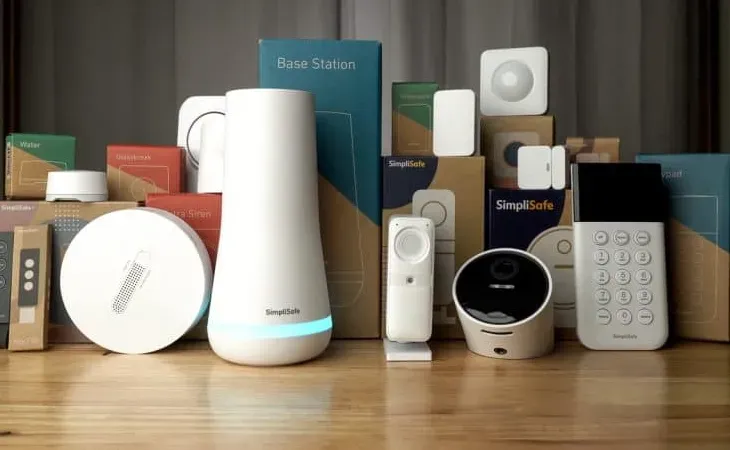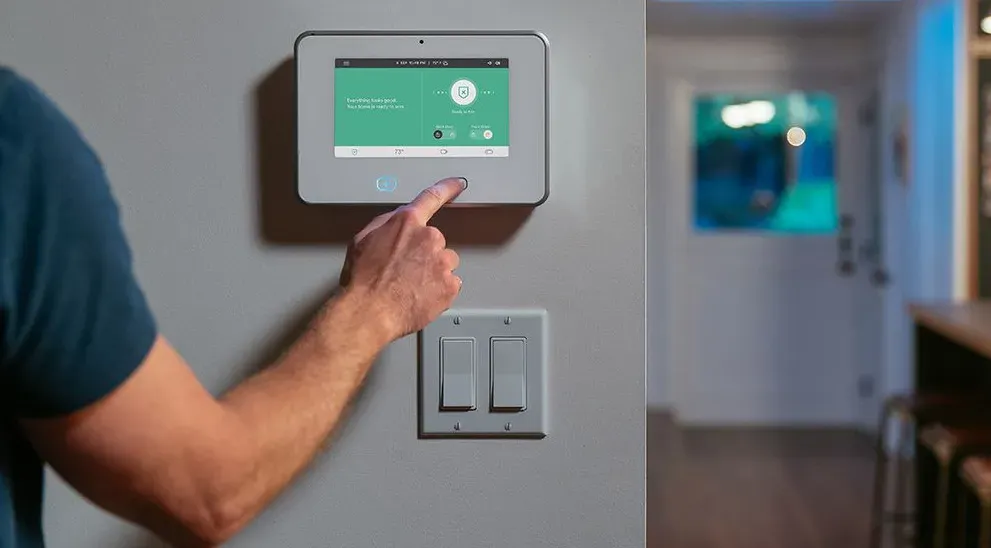The Complete Guide to Securing Your Home: Beyond the Door Lock

By
Shrusti Naik
Posted on September 9, 2025. 10 mins

The Complete Guide to Securing Your Home: Beyond the Door Lock
Introduction

In India, the idea of “home” extends beyond walls and possessions, it represents safety, privacy, and peace of mind. Yet, rising urban density, economic disparities, and migration have also led to a growing concern about home security. According to NCRB data, thefts and break-ins accounted for nearly 60% of property-related crimes in metropolitan cities in 2024 (Source: NCRB, 2024). While most households rely on traditional door locks, true security demands a more holistic approach, one that blends technology, awareness, and community vigilance. This guide goes beyond the lock to explore how Indian homeowners can proactively safeguard their homes.
Understanding the Modern Landscape of Home Security in India
The evolution of Indian housing, gated communities, high-rise apartments, and nuclear family setups, has reshaped security challenges. On one hand, residential complexes with CCTV and guards offer a level of safety; on the other, independent homes and rental apartments remain vulnerable. A recent Statista India survey (2025) found that over 70% of Indian urban residents still depend on basic door locks, while only 15% use advanced digital or smart security systems. This gap highlights both the opportunity and necessity of upgrading traditional security measures. Check out Will the Rupee Depreciate Further? How It Affects You
Beyond Locks: The Layered Approach to Home Safety
A sturdy lock is the first line of defense but hardly the last. Effective home security works like an onion, layered, resilient, and difficult to penetrate. Physical reinforcements such as steel doors, window grills, and motion-sensor lights reduce risk significantly. Digital innovations, ranging from video doorbells to AI-enabled surveillance cameras, provide both deterrence and evidence in case of intrusions. Importantly, community security measures like neighborhood watch programs and gated-community protocols add another protective layer, particularly in India’s semi-urban and tier-2 cities where police response times may be slower. You might also like Fractional Ownership of Real Estate in India 2025: How Smart Indians Are Buying a Slice of the Skyline Without Breaking the Bank
The Rise of Smart Home Security in Indian Cities
India’s smart home security market is projected to grow at a CAGR of 20% between 2024-2030, fueled by rising disposable incomes and affordable IoT devices (Source: Business Standard, April 2025). Devices such as Wi-Fi-enabled cameras, biometric locks, and alarm systems are no longer limited to luxury homes; many now retail under ₹5,000, making them accessible to middle-class households. For example, video doorbells have become especially popular in Mumbai and Bengaluru apartments, allowing residents to screen visitors remotely. While these devices boost safety, their adoption raises a parallel need for data privacy, ensuring video feeds and access codes are not vulnerable to hacking.
Hidden Vulnerabilities Indian Homeowners Often Overlook
Despite better awareness, several gaps remain in how Indian households approach security. Many overlook secondary entry points such as balconies, rear doors, or terrace access. Others underestimate the risks of domestic help mismanagement, where lack of proper background verification can create loopholes. Equally critical is cyber risk: as banking, utilities, and even door locks move online, phishing or Wi-Fi breaches can compromise both digital and physical safety. According to Mint (June 2025), cybercrime linked to smart home devices grew by 28% year-on-year, underscoring the need to treat cybersecurity as part of home protection. Check out this Property Management for NRIs: A Seamless Guide to Handling Your Indian Assets from Abroad
Community and Legal Aspects of Security
While personal measures are essential, home security in India is also shaped by collective and legal frameworks. Many Resident Welfare Associations (RWAs) are mandating CCTV coverage and biometric access in gated societies. Cities like Delhi and Bengaluru have introduced police-verified domestic help registries to improve safety. Home insurance, often overlooked, is gaining traction: IRDAI data (2025) shows a 15% increase in home insurance adoption, largely driven by urban homeowners seeking coverage not just for theft, but also fire and natural disasters. Together, these steps illustrate that home security is no longer just about the individual, it is evolving into a shared responsibility between residents, technology providers, and the state. You may want to check Understanding Real Estate Taxes
Balancing Cost and Peace of Mind
The cost of home security varies widely: while a high-tech surveillance system can cost upwards of ₹50,000, many effective measures, such as reinforced locks, basic cameras, and neighborhood coordination, can be achieved at a fraction of that. The key is striking a balance between affordability and comprehensiveness. For most Indian households, a layered strategy combining physical reinforcement, selective smart tech, and community vigilance is the most practical and cost-effective path to peace of mind. Also read, What the RBI Repo Rate Cut Means for Homebuyers: EMIs Just Got Cheaper
Conclusion

Securing your home is no longer about locking the front door, it’s about building a resilient ecosystem of safety. From traditional reinforcements to smart technologies, from domestic staff verification to cyber-awareness, Indian homeowners must embrace a multi-layered approach. The cost of complacency is far higher than the investment in preventive measures. In 2025 and beyond, peace of mind will belong not just to those who secure their locks, but to those who secure their homes, inside and out.
For those in pursuit of their dream home, investment opportunities, or a sanctuary to call their own, Jugyah provides top housing solutions with its intelligent technology.
Frequently Asked Questions
Q1. What are the most affordable home security options in India? Reinforced door locks, window grills, and motion-sensor lights remain the most budget-friendly yet effective solutions.
Q2. Are smart security devices worth it for Indian apartments? Yes. Devices like video doorbells and Wi-Fi-enabled cameras are increasingly affordable and provide both convenience and safety, especially in urban apartments.
Q3. How can I ensure my domestic help does not become a security risk? Always conduct proper background checks, preferably police verification, and keep communication transparent. Many RWAs now require formal registration of domestic workers.
Q4. Does home insurance in India cover theft and burglary? Yes. Most home insurance policies cover theft, burglary, and fire damage. IRDAI encourages homeowners to include these protections in their plans.
Q5. What role does cybersecurity play in home protection? As smart locks, cameras, and appliances connect to the internet, securing your Wi-Fi and passwords is crucial to prevent hackers from exploiting digital vulnerabilities.